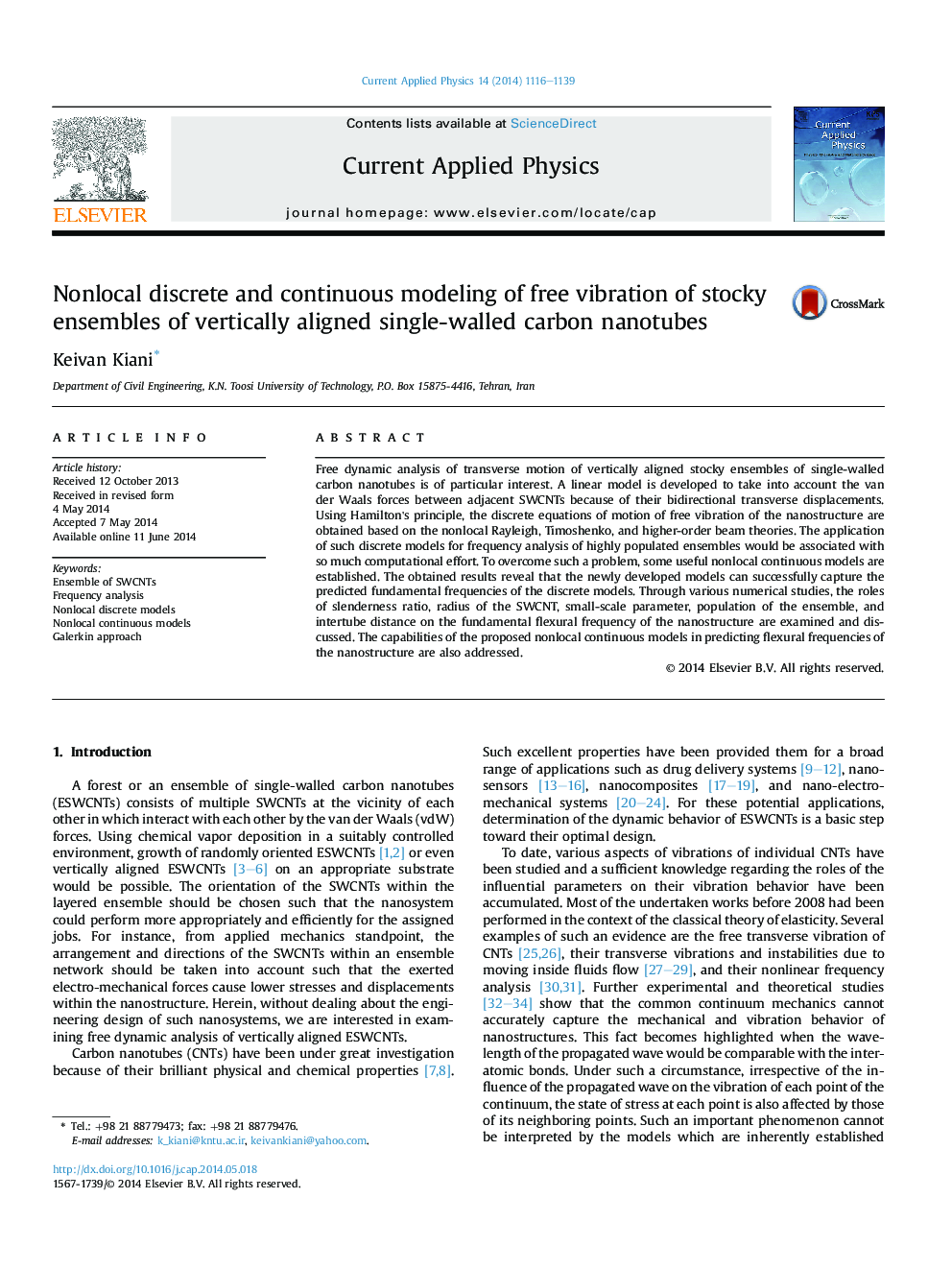| Article ID | Journal | Published Year | Pages | File Type |
|---|---|---|---|---|
| 1785847 | Current Applied Physics | 2014 | 24 Pages |
•For the first time, free vibration of ensembles of SWCNTs is methodically examined.•Nonlocal discrete and continuous models are developed using Hamilton's principle.•Using modal analysis and Galerkin approach, fundamental frequencies are calculated.•The efficiency of the proposed continuous models is inspected.•The roles of geometry, small-scale, and intertube distance on frequency are studied.
Free dynamic analysis of transverse motion of vertically aligned stocky ensembles of single-walled carbon nanotubes is of particular interest. A linear model is developed to take into account the van der Waals forces between adjacent SWCNTs because of their bidirectional transverse displacements. Using Hamilton's principle, the discrete equations of motion of free vibration of the nanostructure are obtained based on the nonlocal Rayleigh, Timoshenko, and higher-order beam theories. The application of such discrete models for frequency analysis of highly populated ensembles would be associated with so much computational effort. To overcome such a problem, some useful nonlocal continuous models are established. The obtained results reveal that the newly developed models can successfully capture the predicted fundamental frequencies of the discrete models. Through various numerical studies, the roles of slenderness ratio, radius of the SWCNT, small-scale parameter, population of the ensemble, and intertube distance on the fundamental flexural frequency of the nanostructure are examined and discussed. The capabilities of the proposed nonlocal continuous models in predicting flexural frequencies of the nanostructure are also addressed.
Graphical abstractNovel nonlocal continuum-based discrete and continuous models are proposed for free vibration analysis of vertically aligned ensembles of SWCNTs.Figure optionsDownload full-size imageDownload as PowerPoint slide
